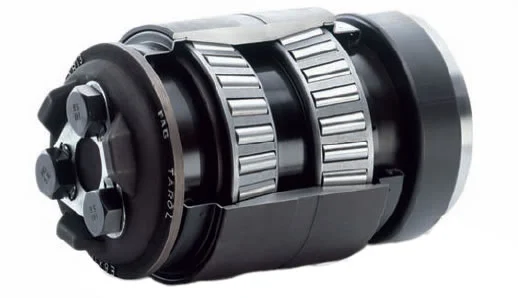Tiny Wonders: Needle Roller Bearings Demystified
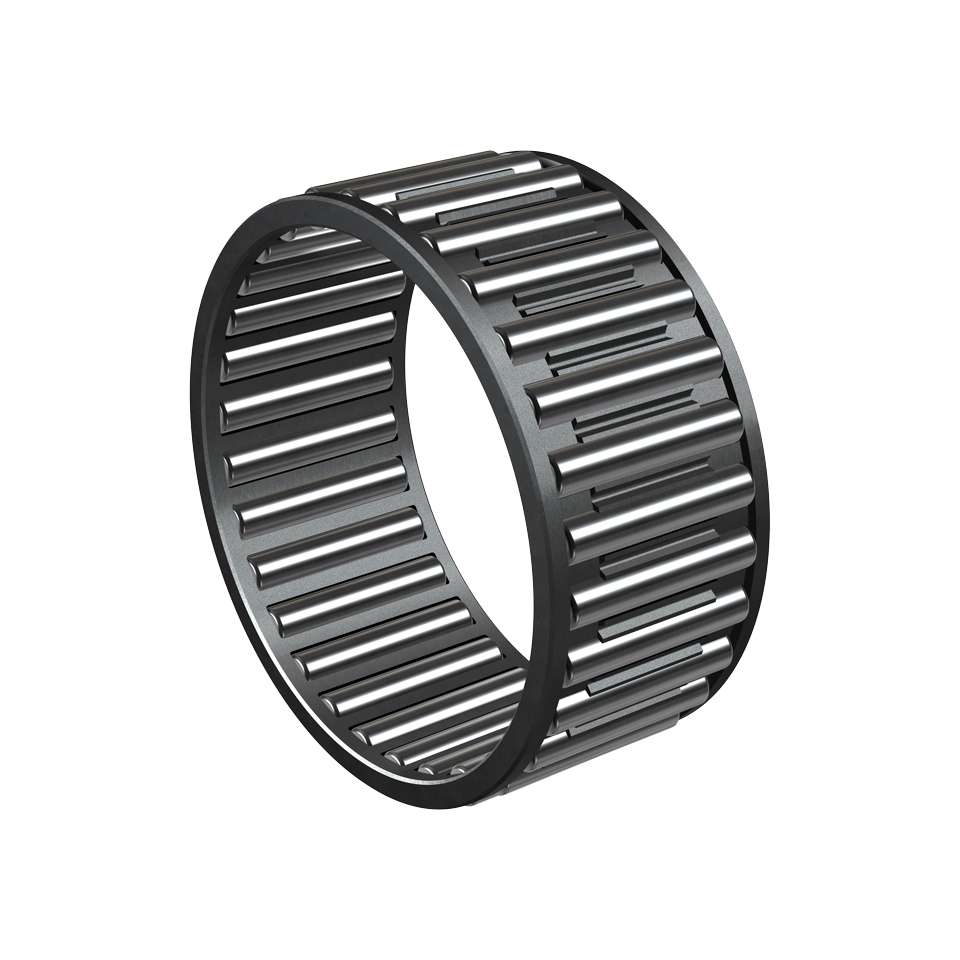
Table of Contents
Introduction
Needle roller bearings are a remarkable engineering marvel that often goes unnoticed. These inconspicuous, slender cylindrical rollers, finer than a human hair, wield immense significance in the realm of mechanical systems. In this comprehensive exploration, we will embark on a journey to unveil the multifaceted world of needle roller bearings. We will delve into their intricate structure, understand their fundamental role in mechanical applications, and discover the plethora of industries where these miniature giants hold sway.
The Basics of Needle Roller Bearings
What Are Needle Roller Bearings?
At the very core of understanding needle roller bearings is grasping their fundamental purpose and design. Needle roller bearings are meticulously crafted mechanical devices that have been engineered to address two critical challenges: minimizing friction and evenly distributing loads within machinery. Their defining characteristic lies in the utilization of elongated cylindrical rollers as opposed to the more conventional ball bearings. This distinctive design affords them a variety of advantages and unique features, making them a preferred choice in countless applications.
Structure and Components
A typical needle roller bearing comprises several essential components. These include an outer ring, an inner ring, an assembly of needle rollers, and a cage. The outer and inner rings serve as the bearing’s raceways, providing a guided pathway for the motion of the needle rollers. The needle rollers themselves are held in place by the cage, which ensures they are evenly spaced. The cylindrical shape of these rollers is a key design element, facilitating a larger contact area and, consequently, a more even distribution of loads, reducing wear and tear.
Advantages and Disadvantages
Needle roller bearings present a host of advantages that render them suitable for a wide range of applications. Their high load-carrying capacity, compact design, and exceptional precision are standout qualities. However, it’s crucial to note that these advantages come with some trade-offs. In applications where high-speed operation is essential, needle roller bearings might not be the best choice due to their higher friction levels compared to ball bearings. Thus, selecting the appropriate type of bearing is paramount to ensure it performs optimally in any given context.
How Needle Roller Bearings Work
Load Distribution Mechanism
To understand the significance of needle roller bearings, we must first grasp their load distribution mechanism. This fundamental principle underlines their exceptional durability and effectiveness. The cylindrical shape of the needle rollers allows for a more extensive contact area compared to conventional bearings. As a result, they distribute loads more uniformly across the bearing, significantly reducing stress on individual points and minimizing wear and tear, thus enhancing their longevity and performance.
Reducing Friction in Precision Engineering
One of the standout features of needle roller bearings is their capacity to substantially reduce friction, making them an ideal choice in precision engineering applications. Reduced friction translates to improved efficiency and, equally importantly, reduced heat generation. This property is especially critical in applications where precision is paramount, as excessive heat can lead to a multitude of problems, including reduced component lifespan and compromised performance.
Applications in Various Industries
The versatility of needle roller bearings becomes evident when we explore their applications across various industries. Their capacity to reduce friction and distribute loads efficiently has led to their widespread adoption in a multitude of fields. From automotive engines to intricate medical devices and aerospace systems, these seemingly unassuming components play a pivotal role in ensuring the smooth and efficient operation of a diverse array of machinery.
Types of Needle Roller Bearings
Cylindrical Needle Rollers
Cylindrical needle rollers, among the most common variants, feature a straightforward yet effective design. These rollers offer simplicity and versatility, making them suitable for a wide range of applications across various industries. Their ease of integration into machinery has earned them a prominent place in the world of bearings.
Drawn Cup Needle Rollers
Drawn cup needle rollers present a compact, cup-like outer ring that encapsulates the needle rollers. This design ensures that the rollers are securely held in place while offering a space-saving solution, making them particularly well-suited for applications with limited space.
Thrust Needle Rollers
When applications demand the handling of axial loads, thrust needle rollers come into play. Their design is specifically engineered to handle forces that act in a single direction, making them indispensable in situations where significant force must be managed with precision.
Combined Bearings
Combined bearings, as the name suggests, integrate various bearing types into a single unit. This approach offers a space-saving and versatile solution, ideal for complex machinery where multiple functions must be performed within a limited space. Such bearings are tailored to address the intricacies of these multifunctional applications, ensuring optimal performance.
Sizing and Selection
Factors Affecting Bearing Selection
Selecting the right needle roller bearing for a specific application is a multifaceted process that demands careful consideration of numerous factors. These factors encompass but are not limited to the expected load, the desired operational speed, the environmental conditions, and the anticipated service life of the bearing. Each application often entails unique demands, and it is the judicious evaluation of these parameters that paves the way for the most appropriate selection.
Calculating Load Capacity
The load capacity of a needle roller bearing is a critical parameter that directly influences its ability to withstand the forces encountered during operation. It is essential to understand the concept of load capacity and how manufacturers provide load ratings to guide the selection process. This knowledge empowers engineers and technicians to make informed choices when identifying the right bearing for a specific application.
Temperature and Lubrication Considerations
Needle roller bearings, like all mechanical components, are sensitive to temperature and the quality of lubrication. High temperatures and insufficient or improper lubrication can result in premature bearing failure. Understanding the temperature limits of a bearing and choosing the right lubricant for the application are paramount in ensuring the long-term reliability and efficiency of these crucial components.
Needle Roller Bearings in Automotive Industry
Engine Components
In the automotive industry, needle roller bearings find extensive use in engine components, including camshafts and crankshafts. Their ability to provide high precision and efficiently distribute loads makes them indispensable in these high-performance systems.
Transmission Systems
Transmission systems rely on needle roller bearings to facilitate the smooth shifting of gears. The reduced friction and precise load distribution offered by these bearings are essential for ensuring the seamless operation of transmissions in vehicles of all types.
Suspension and Steering Applications
When it comes to vehicle suspension and steering systems, needle roller bearings play a vital role in maintaining stability and providing responsive handling. The consistent and even distribution of forces is crucial for ensuring the safety and comfort of drivers and passengers alike.
Needle Roller Bearings in Industrial Machinery
Manufacturing Equipment
In the realm of manufacturing, needle roller bearings serve as the backbone of various machinery. This includes CNC routers and industrial robots, where precision, load distribution, and reliability are paramount. These bearings help maintain tight tolerances, ensuring the consistent production of high-quality components and products.
Conveyors and Material Handling
Conveyor systems are the unsung heroes of modern industry, and they heavily depend on needle roller bearings to keep products moving efficiently. These bearings minimize friction, which, in turn, translates to significant energy savings and cost reductions. The smooth, reliable operation of conveyors is essential for the seamless flow of materials within industrial environments.
Packaging and Printing Machines
Needle roller bearings are invaluable in packaging and printing machinery. Their compact design and capacity for precision are critical to ensuring accurate printing and packaging operations. In these applications, precision is not a luxury but a necessity to maintain the quality and consistency of printed materials and packaged products.
Needle Roller Bearings in Aerospace
Aircraft Engines
The aerospace industry demands the utmost precision and reliability, and needle roller bearings are a testament to these requirements. They find their place in critical components like aircraft engines, where their ability to withstand extreme temperatures, loads, and environmental conditions is indispensable for safe and efficient flight.
Landing Gear Systems
Aircraft landing gear systems require robust components to handle the enormous forces and shocks experienced during takeoff and landing. Needle roller bearings contribute significantly to the smooth and reliable operation of landing gear, ensuring passenger safety and comfort.
Spacecraft Applications
Needle roller bearings are not confined to Earth’s atmosphere; they have earned their place in the space industry. These bearings are engineered to endure extreme temperatures and the vacuum of space, making them a reliable choice for spacecraft applications where the margins for error are razor-thin.
Needle Roller Bearings in Medical Devices
Surgical Instruments
The field of medicine relies on precision and accuracy, and needle roller bearings find their way into surgical instruments to ensure precise and smooth movements during medical procedures. These components play a critical role in improving the effectiveness of surgical tools and enhancing the outcomes of medical interventions.
Imaging Equipment
Medical imaging equipment, such as MRI machines and X-ray devices, is indispensable for diagnostics and medical research. Needle roller bearings, with their capacity for precise positioning and rotation, contribute to the accuracy and consistency of these critical devices.
Laboratory Devices
Laboratory equipment used for scientific research, experimentation, and analysis often incorporates needle roller bearings. These instruments demand a high level of precision, and these bearings play a key role in achieving the necessary movements and adjustments, ensuring the validity of scientific results.
Needle Roller Bearings in Everyday Life
Household Appliances
From the washer and dryer in your laundry room to the blender in your kitchen, needle roller bearings are at work behind the scenes. They contribute to the efficiency and reliability of everyday household appliances, ensuring that they perform as expected, day in and day out.
Recreational Equipment
In the realm of recreation, needle roller bearings are found in a wide array of gear, including bicycles, skateboards, and other recreational equipment. These bearings provide the smooth and reliable motion needed for a satisfying and safe experience, whether you’re coasting down a hill on a skateboard or pedaling through your neighborhood on a bike.
Personal Electronics
The compact design of needle roller bearings makes them a suitable choice for small electronic devices. They contribute to precise movements in mechanisms like camera focus and optical zoom in personal electronic gadgets, enhancing the functionality and user experience of these devices.
Needle Roller Bearings in Precision Engineering
Microscopes and Telescopes
The world of precision engineering relies heavily on instruments like microscopes and telescopes. These devices necessitate meticulous control of their optical elements, and needle roller bearings play an indispensable role in facilitating precise movements and adjustments. This enables researchers and astronomers to explore the microscopic and cosmic realms with exceptional clarity.
Textile Machinery
The textile industry thrives on precision and efficiency in the production of fabrics and materials. Machinery such as looms and spinning equipment depend on needle roller bearings to ensure consistent and reliable performance. These bearings are essential in maintaining tight tolerances and producing textiles of the highest quality.
Robotic Systems
The field of robotics is rapidly evolving, with robots taking on increasingly complex tasks. Robots, from industrial arms to service robots, require precise and smooth movements for their various functions. Needle roller bearings, with their compact design and load distribution capabilities, are the go-to choice to ensure the accuracy and reliability of robotic systems.
Materials and Manufacturing Processes
Material Choices for Needle Rollers
The performance of needle roller bearings is influenced by the materials used in their construction. Common materials for needle rollers include steel and ceramics, each offering distinct advantages. Steel is known for its strength and durability, while ceramic rollers can operate at higher speeds and are resistant to corrosion. The choice of material depends on the specific requirements of the application.
Precision Manufacturing Techniques
The production of needle roller bearings involves precision manufacturing techniques to ensure the highest levels of quality and performance. These techniques include advanced machining, grinding, and finishing processes that result in bearings with tight tolerances and minimal deviations.
Maintaining Needle Roller Bearings
Lubrication Best Practices
Proper lubrication is the lifeblood of any bearing, and needle roller bearings are no exception. Choosing the right lubricant and applying it correctly are fundamental to the longevity and performance of these bearings. The right lubrication reduces friction, dissipates heat, and protects against wear and corrosion.
Monitoring for Wear and Tear
Regular inspections and monitoring are key to identifying signs of wear and tear in needle roller bearings. Common indicators include increased noise, vibration, and reduced efficiency. Detecting these issues early allows for timely maintenance, preventing further damage and costly breakdowns.
Preventing Failures
Understanding the common causes of bearing failures is essential for preventing them. Failures can result from various factors, including misalignment, contamination, and improper installation. Taking proactive measures to address these issues can extend the lifespan of needle roller bearings and optimize their performance.
Challenges and Common Issues
Dealing with Contamination
Contamination, in the form of dust, debris, or even moisture, can infiltrate a bearing and negatively impact its performance. Effective sealing and maintenance practices are essential to protect needle roller bearings from contaminants, preserving their reliability.
Overcoming Misalignment
Misalignment occurs when the axis of the bearing does not align precisely with the axis of the rotating component. Misalignment can cause premature wear and reduce the bearing’s operational life. Proper installation, alignment procedures, and regularly scheduled maintenance can mitigate the impact of misalignment.
Addressing Noise and Vibration
Excessive noise and vibration in machinery often signify underlying issues with the bearings. Identifying the root causes of these problems, such as misalignment, contamination, or inadequate lubrication, is crucial for improving machine performance and operator comfort. Reducing noise and vibration not only enhances the efficiency of the machinery but also contributes to a safer and more comfortable working environment.
Innovations and Future Trends
Nanotechnology in Bearings
The integration of nanotechnology has ushered in a new era of bearing performance. Nanocoatings and materials with nanoparticles offer even lower friction, greater wear resistance, and enhanced durability. This innovation is pushing the boundaries of what needle roller bearings can achieve, opening up exciting possibilities for a wide range of applications.
Smart Bearings and IoT Integration
The advent of smart bearings equipped with sensors is revolutionizing the way we monitor and maintain machinery. These sensors gather data on bearing performance, temperature, and wear in real time. By integrating with the Internet of Things (IoT), smart bearings enable predictive maintenance strategies, reducing downtime and enhancing the reliability of machinery.
Sustainability and Eco-Friendly Bearings
As environmental concerns grow, the development of eco-friendly bearings is gaining momentum. These bearings are engineered to have reduced environmental impact, from the materials used in their construction to their longevity and recyclability. Eco-friendly bearings not only meet the demands of sustainability but also provide reliable and efficient performance in a responsible manner.
Needle Roller Bearings vs. Other Bearing Types
Comparing Needle Rollers to Ball Bearings
In this section, we’ll delve into the differences between needle roller bearings and ball bearings, two of the most common bearing types. We’ll explore how their unique designs and characteristics make each of them more suitable for specific applications. Understanding the distinctions between these bearing types is crucial for selecting the most appropriate solution for any given situation.
Needle Rollers vs. Tapered Roller Bearings
Tapered roller bearings have their unique strengths and advantages, and we’ll compare them to needle roller bearings in this section. We’ll examine the scenarios in which tapered roller bearings outshine needle rollers and vice versa, providing insights to guide bearing selection.
When to Choose Needle Rollers
To wrap up our comprehensive guide, we’ll discuss the situations in which needle roller bearings are the most suitable choice. By summarizing their strengths and applications, we aim to help readers make informed decisions when selecting bearings for their specific needs.
Conclusion
In this comprehensive exploration of needle roller bearings, we have ventured into the intricate world of these seemingly unassuming cylindrical components. We’ve unveiled the tiny wonders that wield immense influence in diverse industries, from automotive engineering to medical advancements and precision robotics. The understanding of their structure, function, and applications empowers individuals and professionals to make informed decisions when it comes to selecting the right bearings for their specific needs. These seemingly small, cylindrical rollers are testimony to the adage that “big things come in small packages.” They may be diminutive in size, but their impact on the world of machinery, precision engineering, and countless other applications is nothing short of monumental.
Related Posts
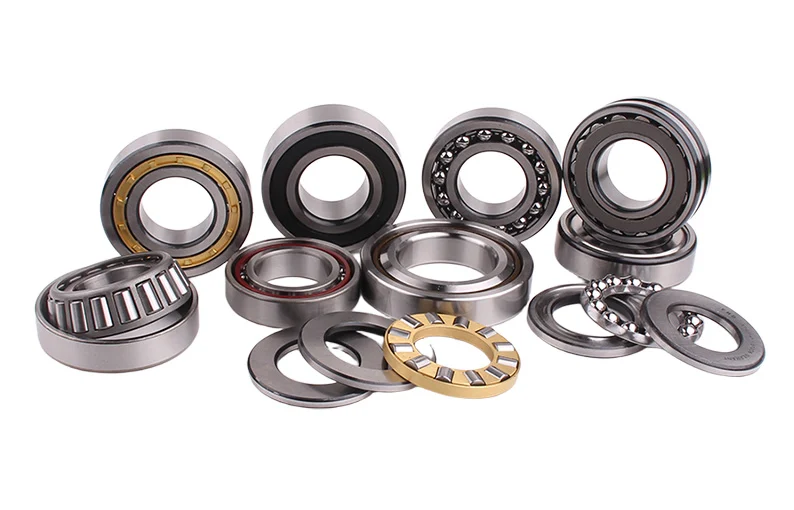
Bearing Code
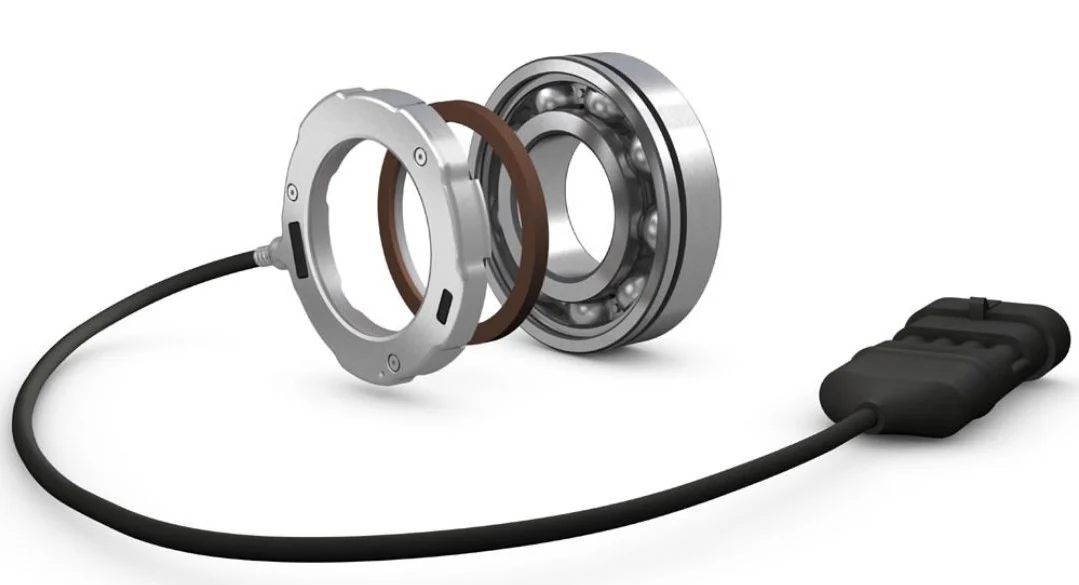
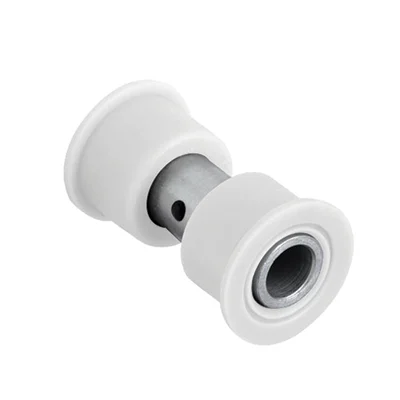
Delrin Bearings: Lubrication-Free Long Life
